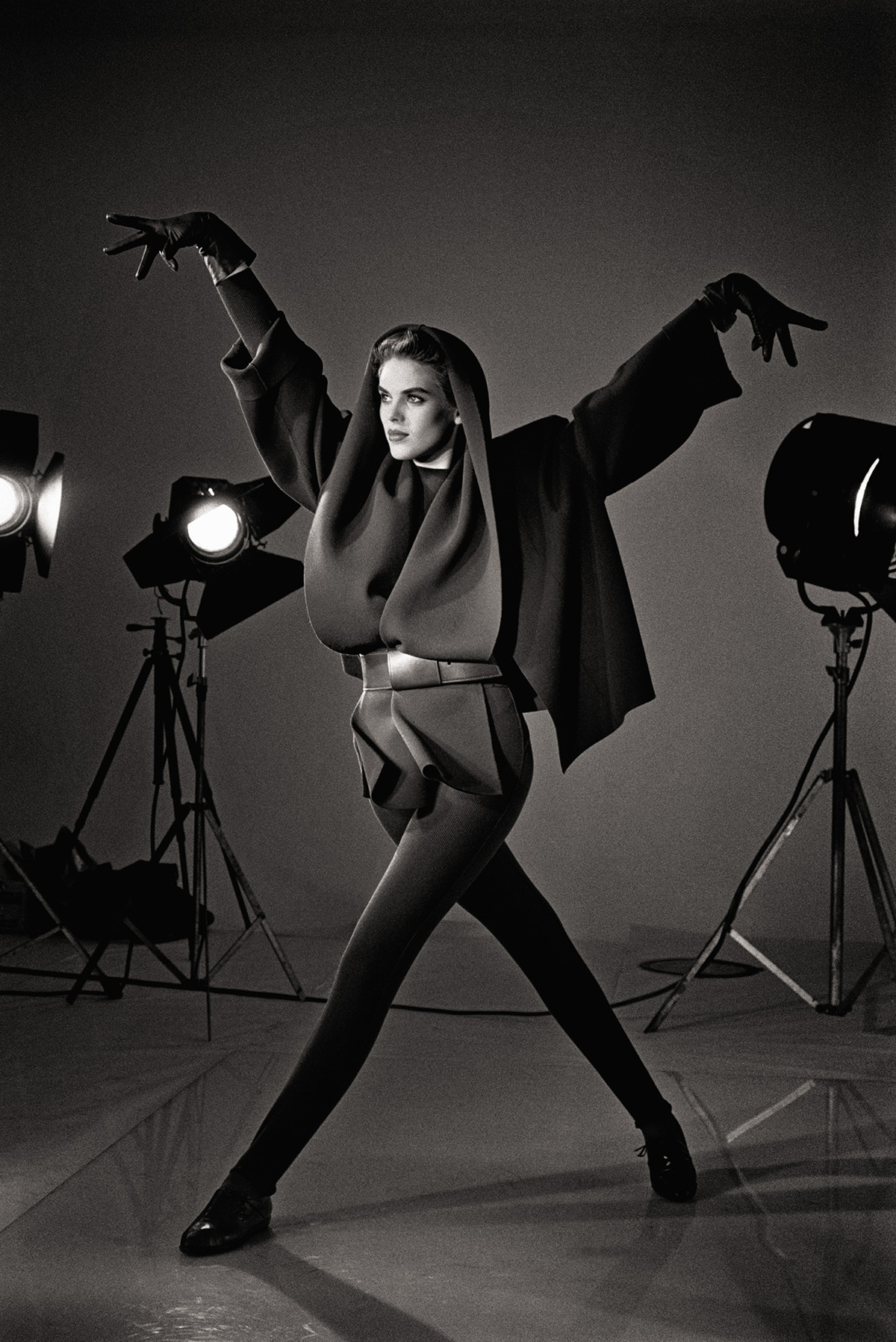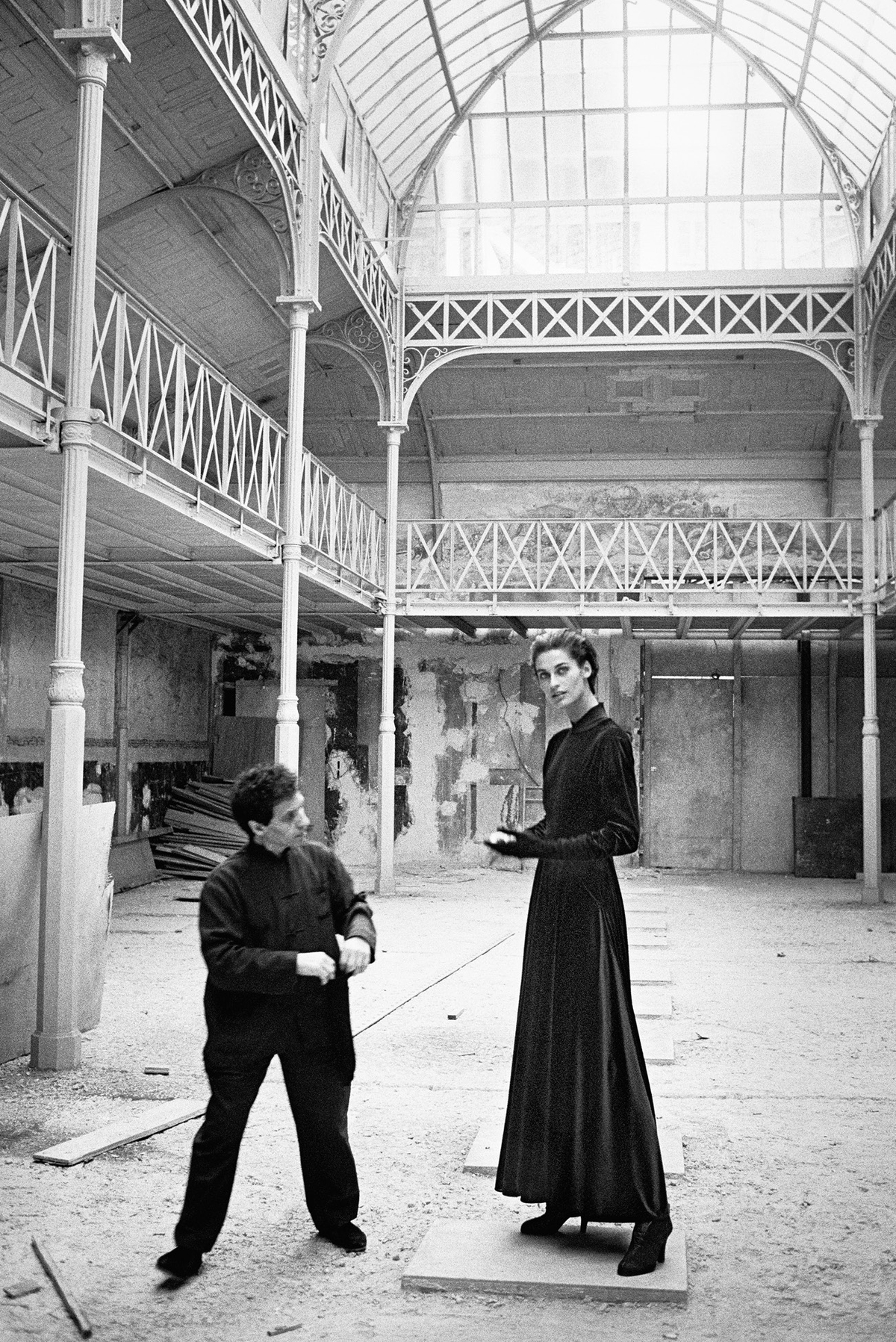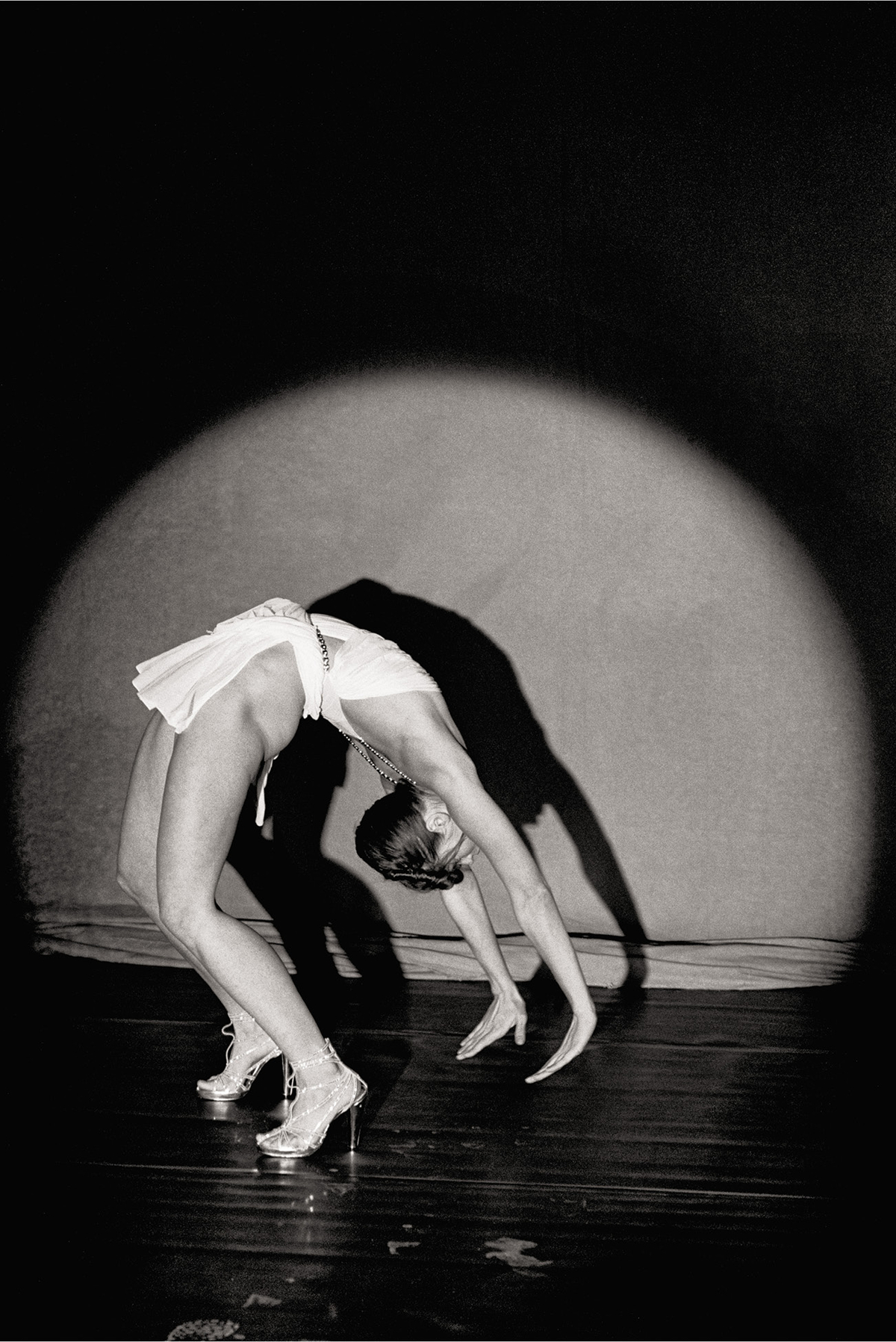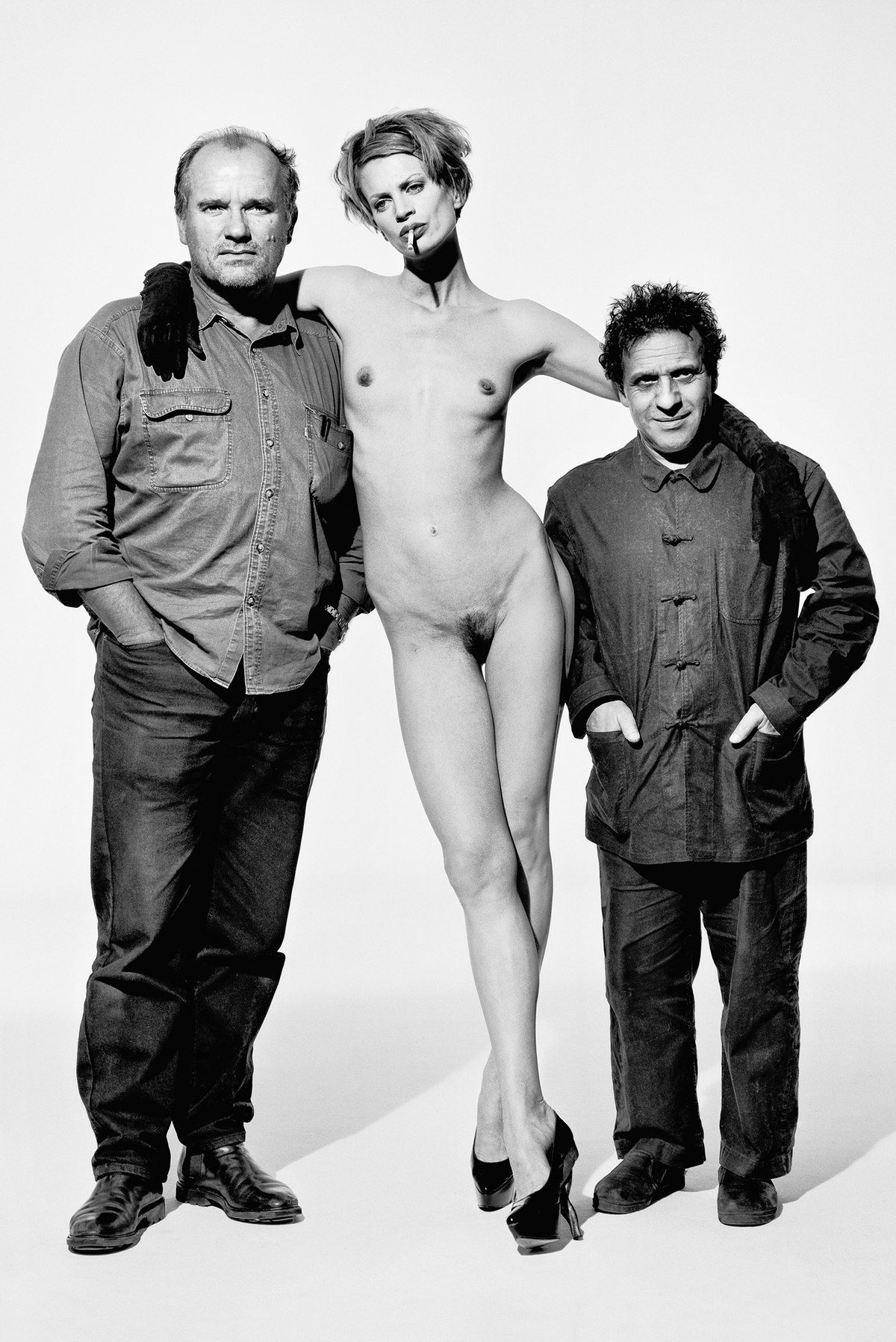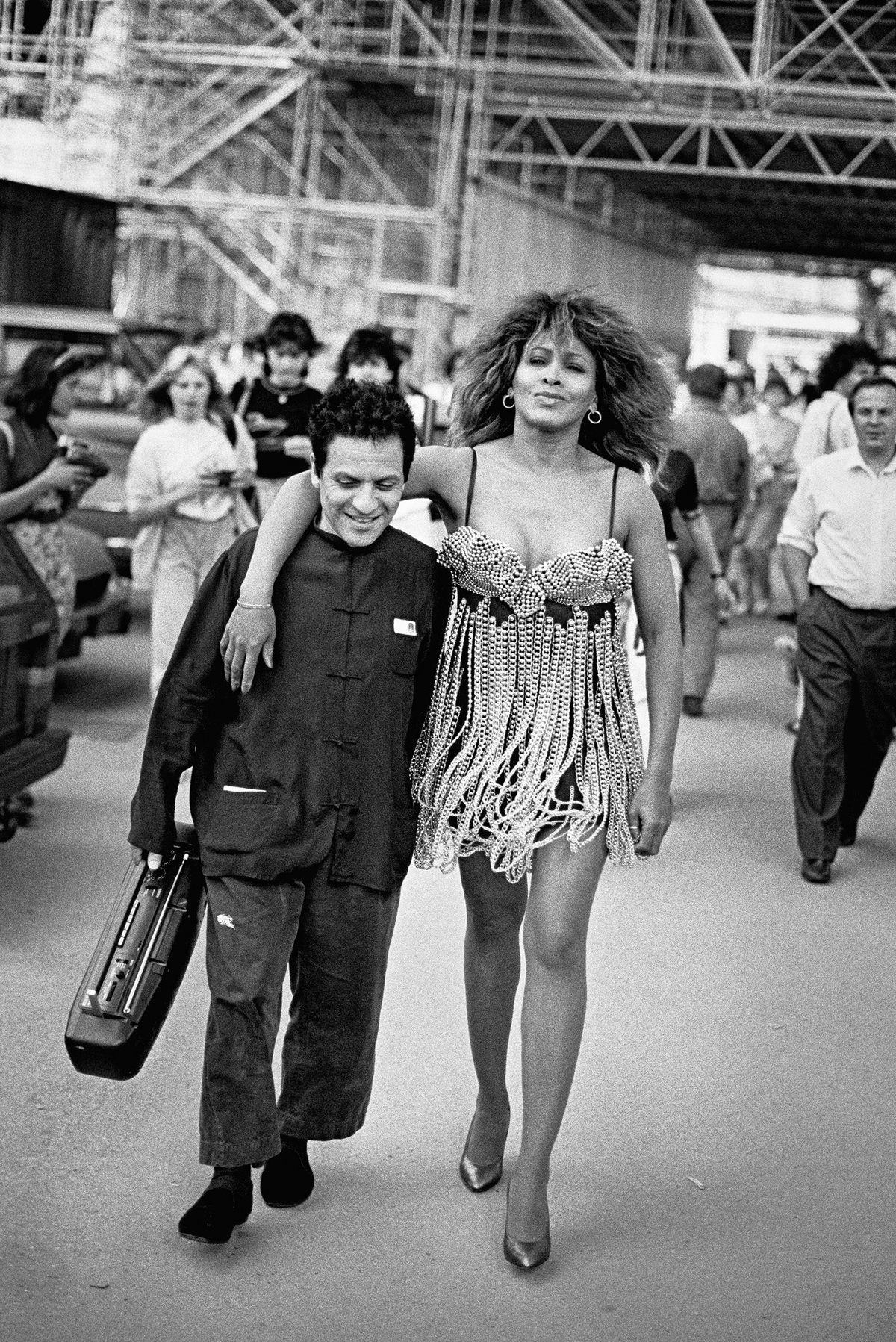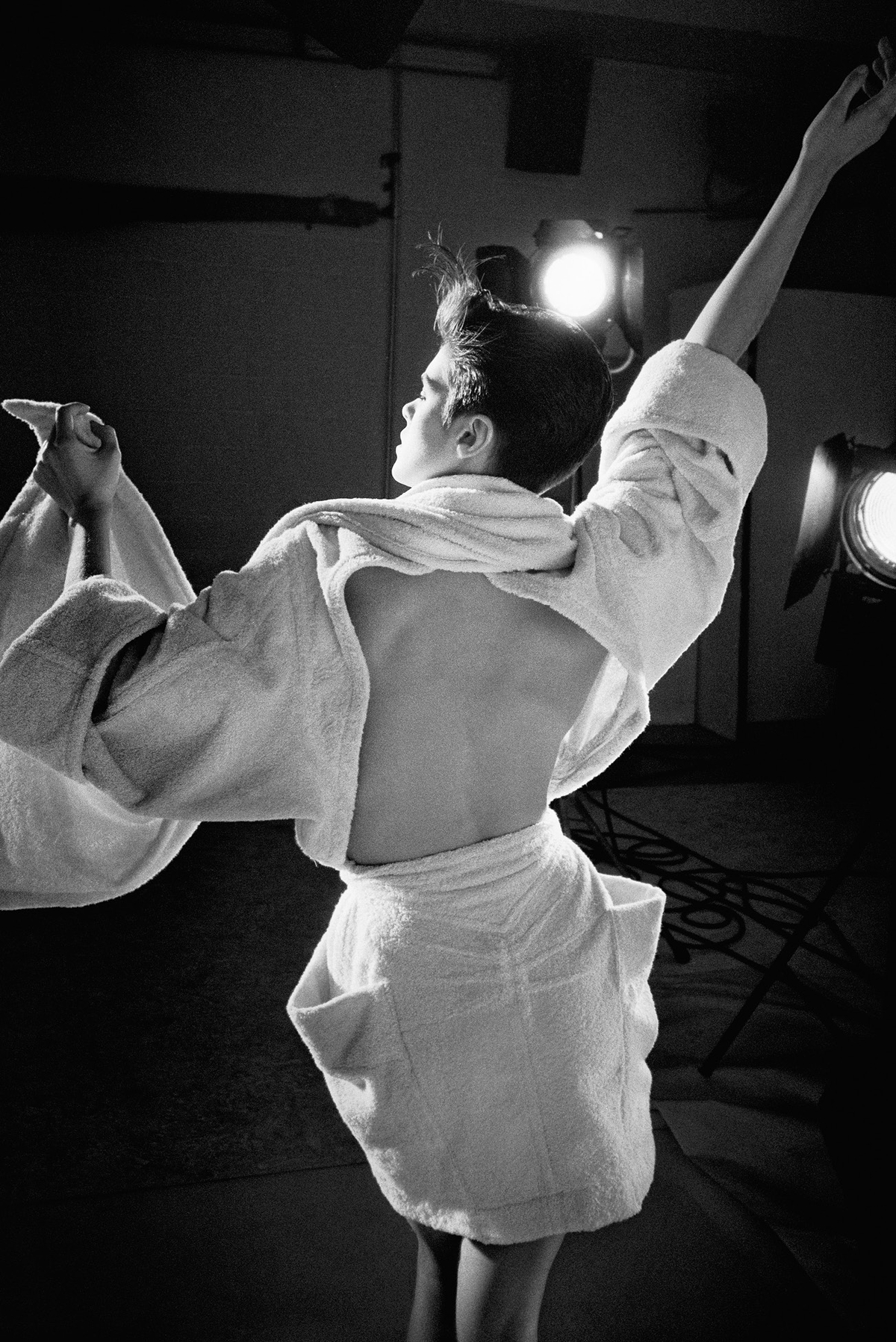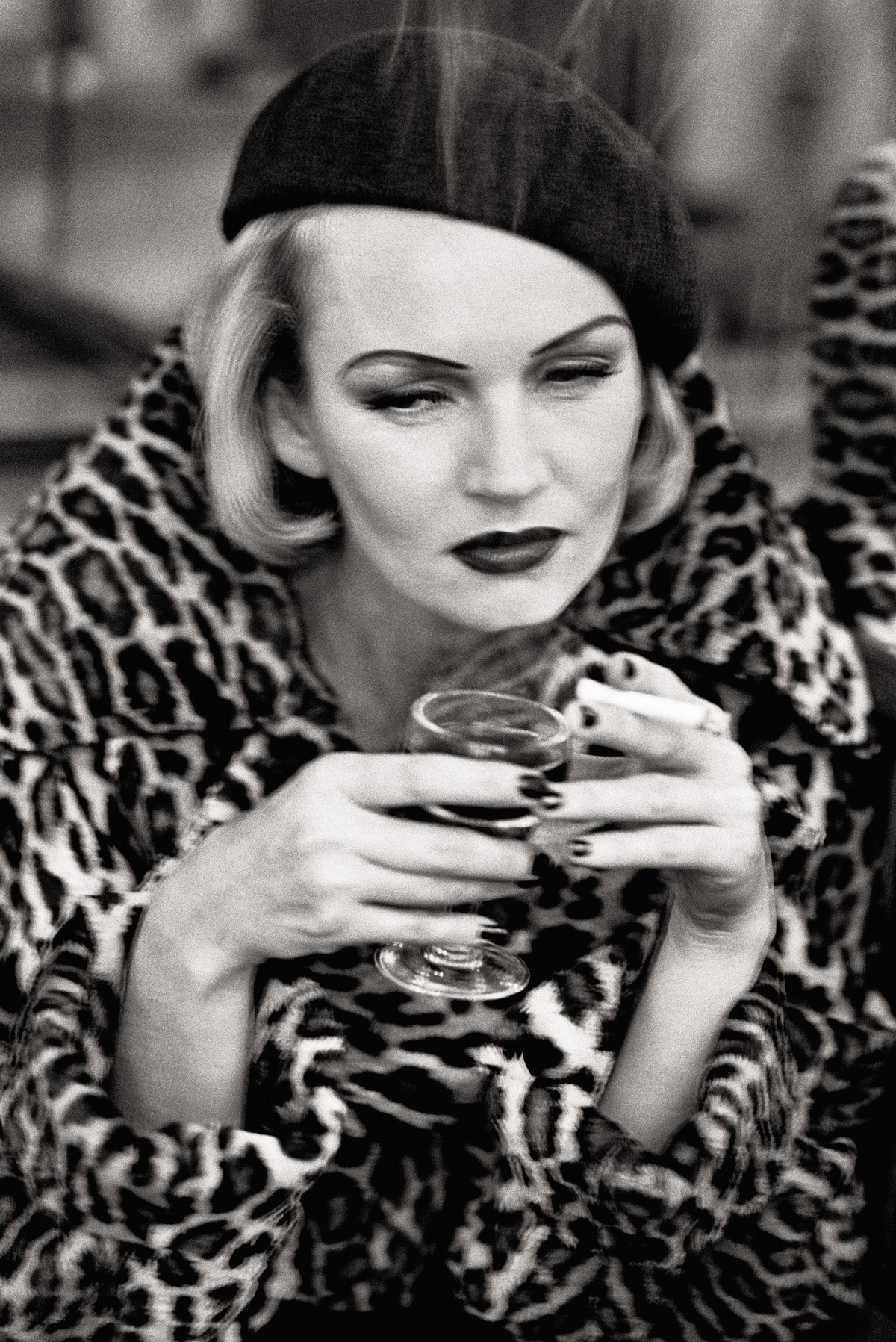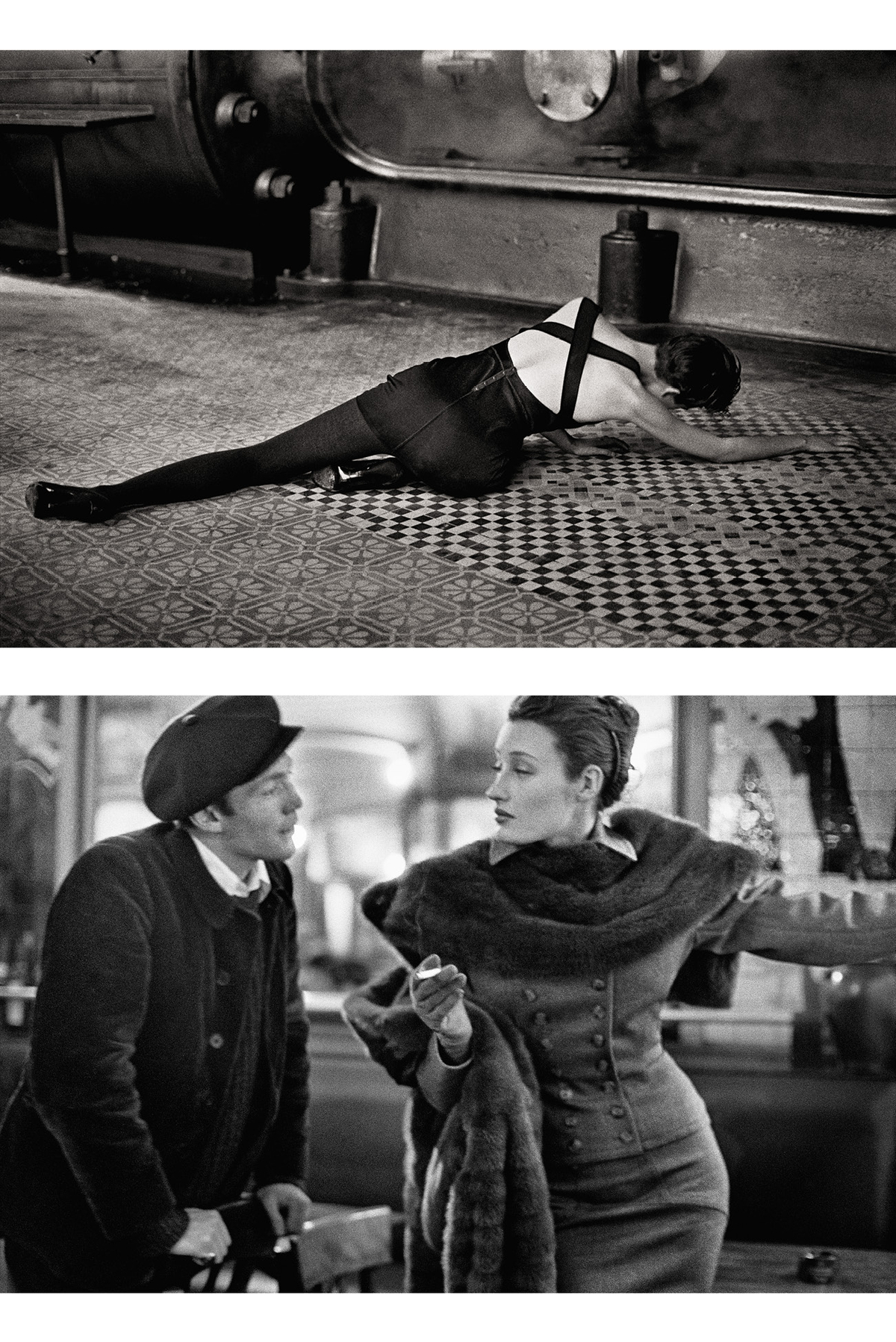“Oh, no!” says Alicia Silverstone in the movie Clueless, abashed that a mugger is telling her to lie down on the ground. “You don’t understand. This is an Alaïa!” The dress is geranium pink, in keeping with the bubblegum colors of the movie. But black was the true love of Azzedine Alaïa, the revered Tunisian couturier, who died in 2017. His close collaborator, the revered photographer Peter Lindbergh, who died in 2019, loved it, too. This month, to accompany an exhibition at the Fondation Azzedine Alaïa, in Paris, Taschen releases the first monograph focused on their artistic friendship, Peter Lindbergh. Azzedine Alaïa.
“I only want black,” Alaïa once said (sounding very much like the Spanish couturier Cristóbal Balenciaga, a fellow architect in cloth). “It is what I start with when I create a model.” The color that absorbs all colors, black is timeless and mysterious—as was Alaïa, who ignored fashion trends and showed only what he wanted, when he wanted. Peter Lindbergh shared these poetics. A master of tonality, both soft and deep, he created black-and-white images in which precision and flow become one. The two men understood each other, almost without speaking, and you can see it in the photos—the patterns and the sense of play, the way the curves and crosses in Alaïa’s designs are brought to the surface by Lindbergh’s lens. (Look to the photos “Paris,” 1984; “Aubervilliers,” 2003; and “Duisburg,” 1985.) The exhibition—directed by Benjamin Lindbergh, one of Peter’s sons, and Olivier Saillard—and the catalogue honor the affinity of these two artists, their soulful approach to beauty. —Laura Jacobs


